Before the internet transformed information into an endless, algorithmically-driven stream, news consumption in the 1980s had a different rhythm—more deliberate, more communal, and in many ways, more personal. The ritual of gathering information wasn’t a constant, anxiety-inducing scroll but rather distinct moments in our day when we chose to connect with the wider world. In an era when “going viral” referred exclusively to medical conditions and “platforms” were things you stood on, news felt like a shared experience rather than an individually curated reality. This fundamentally different relationship with information shaped not just what we knew, but how we processed it together.
1. The Morning Newspaper Ritual

Few sounds defined American mornings in the 1980s quite like the distinctive thwack of a newspaper hitting the driveway, followed by the familiar rustling of parents divvying up sections at the breakfast table. The physical newspaper created natural boundaries around information consumption—it had a beginning and an end, unlike today’s infinite scroll—and its fixed publication schedule meant everyone in town received the same information simultaneously. Family negotiations over who got which section first (“Dad gets sports, Mom gets lifestyle, kids fight over the comics”) established hierarchies and reading patterns that became daily rituals, teaching children patience while waiting for their turn with the funnies. According to 9News, we can at least count on small-town local newspapers to hold the line on physical print and news circulation.
The newspaper’s physical presence meant that discovering news items happened differently—through serendipitous page-turning rather than algorithmic recommendation, often leading readers to encounter stories they hadn’t specifically sought out. Front page placement, headline size, and above-the-fold positioning conveyed editorial judgment about importance in ways more transparent than today’s digital curation, while the letters to the editor provided a curated, delayed form of comment section that required thought and effort to participate in. The communal experience extended beyond individual households, with neighbors discussing the same headlines at bus stops and colleagues referencing shared articles at work, creating a common informational foundation that seems increasingly rare in our fragmented media landscape.
2. The Evening News Anchor as Trusted Friend

In an era of just three major networks, the evening news anchor achieved a status somewhere between journalist and family member, with figures like Peter Jennings, Tom Brokaw, and Dan Rather becoming trusted voices who visited living rooms nightly at the same time. Unlike today’s 24-hour news personalities, these anchors cultivated gravitas rather than controversy, speaking with measured tones that conveyed authority without partisanship. Their familiar faces guided families through major historical moments from the Challenger disaster to the fall of the Berlin Wall, creating shared national experiences as tens of millions watched exactly the same coverage simultaneously. To this day, as reported by Arizona PBS, Walter Cronkite remains so trusted and celebrated a figure that institutions have been named in his honor.
What made these parasocial relationships particularly powerful was their consistency—the same face, at the same time, in the same chair, day after day for decades, creating a sense of stability in an unpredictable world. The ritual of gathering around the television at 6:30 p.m. marked a transition in the day when families simultaneously absorbed the same information, leading to dinner table discussions where everyone started with the same baseline understanding of current events. When Walter Cronkite—who had retired in 1981 but whose influence extended throughout the decade—was consistently rated “the most trusted man in America,” it reflected a now-lost era when news consumption itself was a unifying rather than dividing experience.
3. The Weekly News Magazine’s Deeper Dive
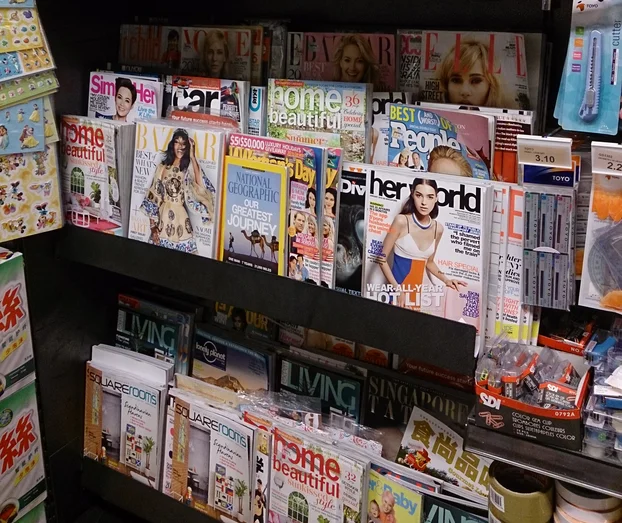
For those seeking context beyond daily headlines, weekly news magazines like Time, Newsweek, and U.S. News & World Report provided a rhythmic pulse of more detailed analysis that arrived with reassuring regularity in mailboxes across America. These magazines created a different relationship with news—more reflective and comprehensive than newspapers, more deeply reported than television—allowing readers to engage with complex stories after initial reactions had settled. Their publication schedule created natural news cycles with time for facts to be verified and contexts to be understood, rather than today’s constant updates and retractions that can leave consumers feeling perpetually unsettled. The Spinoff explores just how likely we are for a return to physical magazines in earnest in the imminent future.
The physical presence of these magazines in homes—stacked on coffee tables, displayed in waiting rooms, carried onto commuter trains—made encountering news a tactile experience with distinct boundaries. The iconic covers became cultural touchstones, from Time’s “Person of the Year” to Newsweek’s bold headline treatments, creating visual shorthand for pivotal moments that everyone recognized. Perhaps most importantly, these publications employed robust fact-checking departments and editorial hierarchies that filtered information before publication—a stark contrast to today’s social media environment where verification often happens after distribution, if at all.
4. The Radio News Update While Driving

Car radio news on the 8s—those brief hourly or half-hourly updates—created rhythmic information checkpoints throughout the day that drivers could count on without overwhelming them with constant breaking alerts. These concise summaries, usually lasting just 2-3 minutes, provided enough information to stay informed without inducing the news fatigue so common today. The anonymous voices of radio news readers, focusing on facts rather than personality, created a different relationship with information—less about who was delivering it and more about what was being conveyed. Digital Public Library of America breaks down just how integral the radio has been for spreading news, and for just how long it remained the gold standard.
The limitations of the medium—no visuals, no way to rewind, confined to what could be absorbed while navigating traffic—forced extraordinary clarity and economy of language that prioritized truly significant developments. Phrases like “This just in” or “Breaking news” carried genuine weight when used sparingly, unlike their often hyperbolic deployment across today’s media landscape. For many commuters, these brief updates bookended their workdays, providing just enough information to feel connected without the overwhelming immersion that characterizes modern news consumption.
5. The Local TV News Team as Community Fixtures

Local news teams in the 1980s achieved celebrity status in their communities, their familiar faces appearing not just on nightly broadcasts but at supermarket openings, charity events, and school assemblies. Unlike today’s often anonymous digital reporters, these local personalities—the weatherman who’d been forecasting for 20 years, the sports anchor everyone recognized at high school games, the co-anchors whose chemistry viewers analyzed like a long marriage—created genuine relationships with their communities. Their presence at local events wasn’t just publicity but genuine community engagement, making them trusted messengers rather than distant information providers.
The strict time constraints of broadcast news meant these teams had to be highly selective about which stories made the cut, focusing primarily on genuinely local concerns rather than repackaging national content. The weather segment—a particular highlight in many households—was delivered by meteorologists who became local celebrities, their forecasts often committed to memory and discussed at work the next day. The local news sign-off, often featuring co-anchors exchanging pleasantries or personal observations, created a sense of closure and community that algorithmic feeds rarely provide—you knew when you were caught up on the day’s events, rather than feeling perpetually behind an endless information stream.
6. The Playground News Exchange Network
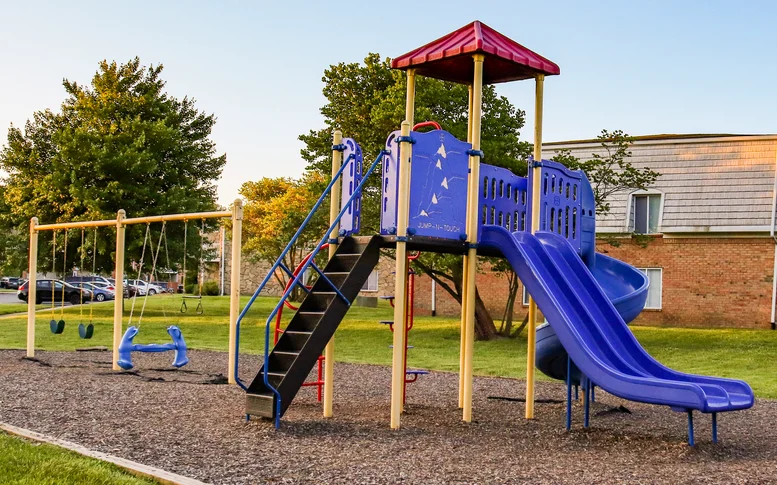
Before social media created filter bubbles, children and teenagers in the 1980s participated in their own form of information distribution through playground discussions where news from adult worlds was processed, sometimes wildly misinterpreted, and passed along. Major news events filtered down through what kids overheard at dinner tables, creating a fascinating game of informational telephone that revealed which families discussed current events and which kept the news at bay. The schoolyard became an inadvertent focus group on national headlines, with children debating the Challenger disaster, the Olympics boycott, or the Iran-Contra affair with varying degrees of accuracy but genuine engagement.
This child-level news network created shared touchpoints across socioeconomic and cultural divides, as kids from different backgrounds found common conversational ground in major headlines. The information that survived this filtering process—simplified but often capturing essential emotional truths—revealed what aspects of news genuinely resonated across generations. These playground exchanges also served as early lessons in source credibility (“My dad works for the government and he says…”) and media literacy (“I saw it on the news so it must be true” versus “My mom says you can’t believe everything on TV”), preparing children for adult information consumption in ways that scheduled media literacy classes rarely achieve.
7. The Office Water Cooler News Aggregator
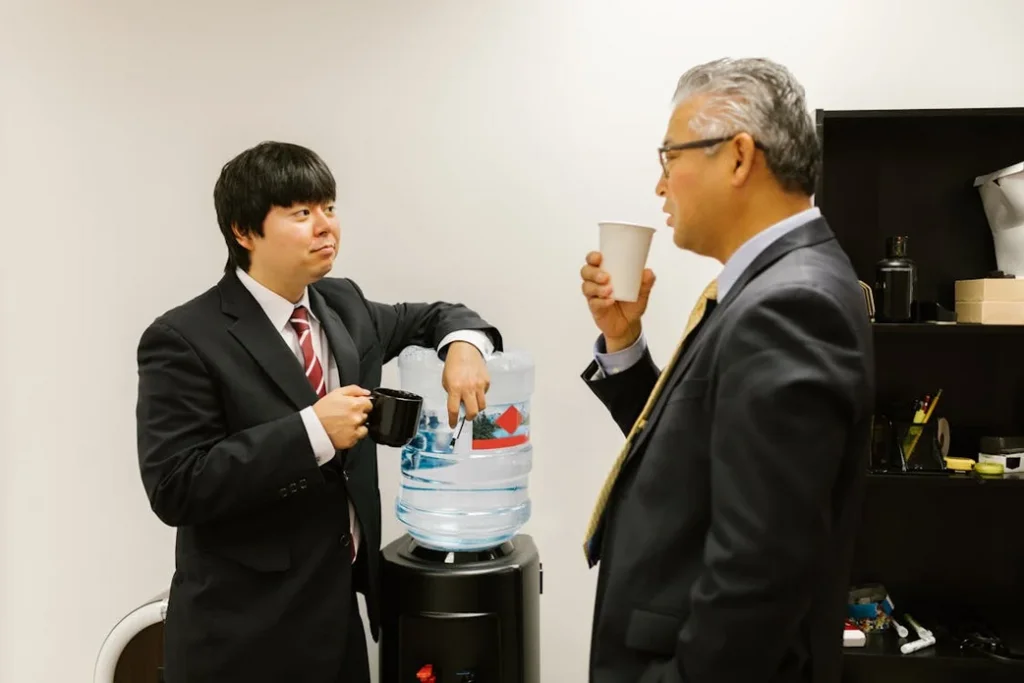
Before digital news feeds, the office water cooler or break room served as a human-powered news aggregator where colleagues shared and compared information they’d gathered from different sources. These informal information exchanges created natural cross-pollination across political and demographic lines, as co-workers who might never socialize outside work nevertheless developed habitual news-sharing relationships. The physical layout of 1980s offices—with dedicated break rooms, smoking areas, and centralized copy machines—created natural gathering points where headlines competed with workplace gossip, television discussions, and personal updates.
These conversations sparked spontaneous fact-checking as different versions of stories were compared and reconciled, creating a collaborative understanding rather than parallel, non-intersecting narratives. Office news exchanges also revealed which sources different colleagues trusted—from the executive who quoted The Wall Street Journal to the secretary who followed tabloid scandals—creating a natural media literacy education as people evaluated and sometimes challenged each other’s sources. Unlike today’s digital sharing, which often happens between like-minded individuals, these workplace exchanges forced engagement across different information ecosystems, creating resilience against complete informational isolation that characterized later media environments.
8. The Grocery Store Tabloid Temptation

While serious news had its dedicated channels, the checkout line tabloids provided an alternate information universe that everyone encountered regardless of their regular media diet. Publications like the National Enquirer, Star, and Weekly World News—with their bold headlines about Elvis sightings, alien encounters, and celebrity secrets—created a shared cultural touchpoint that crossed socioeconomic lines. Unlike today’s misinformation that often masquerades as legitimate news, these tabloids established clear genre boundaries with their distinctive visual style and outlandish claims, helping consumers develop media literacy by clearly distinguishing between news and entertainment.
The physical placement of these publications—unavoidable while waiting in checkout lines—created a unique media dynamic where even those who claimed to ignore them nevertheless absorbed headlines through casual exposure. Their weekly publication schedule created distinctive narrative arcs as stories developed across multiple issues, teaching readers to track ongoing sagas—whether about Elizabeth Taylor’s latest romance or Bat Boy’s newest adventure. Perhaps most importantly, the socialization around tabloids—the permission to openly ridicule their claims while secretly finding them entertaining—created a shared media experience across people who otherwise had little in common.
9. The Video Store Clerk as Cultural Curator
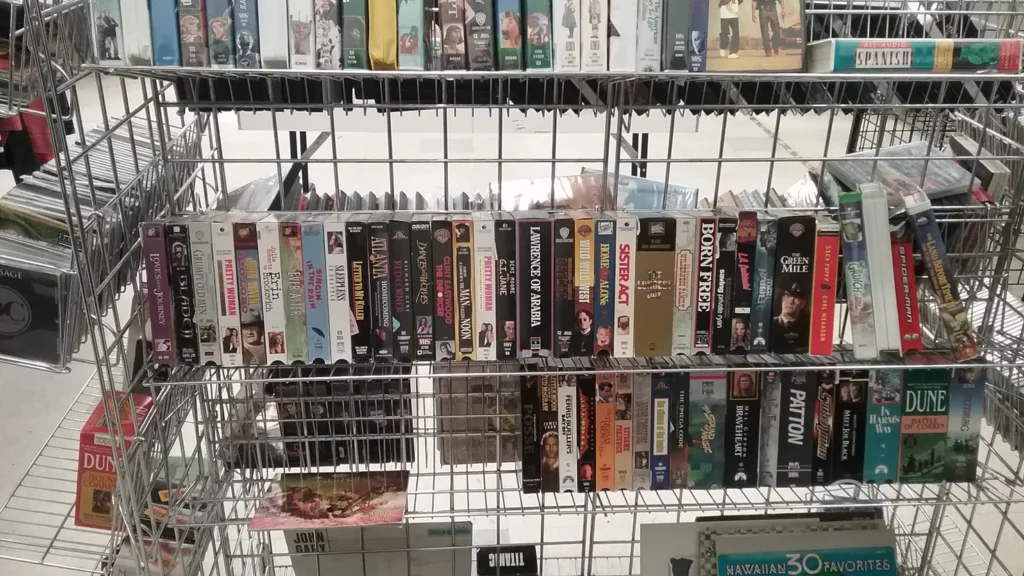
Before streaming algorithms, the local video store clerk served as a human recommendation engine whose suggestions shaped not just entertainment choices but understanding of current events through documentaries and news-adjacent content. These cultural gatekeepers—often film students or passionate cinephiles—provided personalized recommendations based on actual conversations and observed preferences rather than data harvesting. Their special access to new releases and obscure titles gave them cultural capital that customers sought out, creating information exchanges that crossed age and social boundaries.
The physical layout of video stores, with their carefully categorized sections and staff picks shelves, created a browsable, serendipitous discovery process fundamentally different from today’s search-driven interfaces. Customers who came in seeking the latest blockbuster might leave with a documentary about current events after a conversation with a passionate clerk who had actually watched the content they were recommending. The communal nature of these stores—where neighbors ran into each other while browsing and discussed recent viewings—created unexpected information exchanges that digital platforms, for all their convenience, rarely facilitate.
10. The Library Reference Desk’s Deep Knowledge
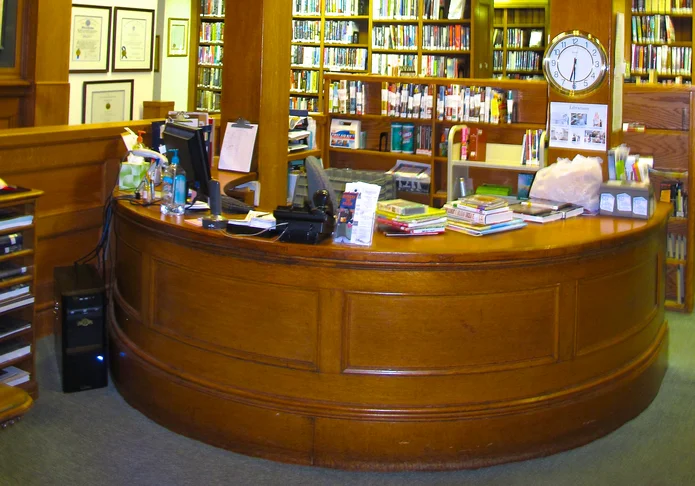
When 1980s news consumers needed to verify information or dive deeper into a topic, the library reference desk provided human-powered search functionality through librarians whose training emphasized source evaluation and information literacy. Unlike search engines that rank results based on popularity or commercial potential, these information professionals assessed the specific needs of the person before them, tailoring their recommendations to the individual’s background knowledge and specific questions. Their guidance helped users navigate complex information landscapes through card catalogs, microfilm archives, and reference books that required skill to access effectively.
The physical journey to the library created a deliberate boundary around information seeking—you had to care enough about a question to make a special trip—while the presence of other community members using the same resources fostered a sense of shared inquiry. Reference librarians often served as information mediators for entire communities, answering questions from students, business owners, journalists, and curious citizens with equal professionalism and discretion. Their role extended beyond finding facts to helping patrons evaluate sources, understand contexts, and recognize biases—skills that digital information systems still struggle to replicate despite massive technological advances.
11. The News Documentary Special Event
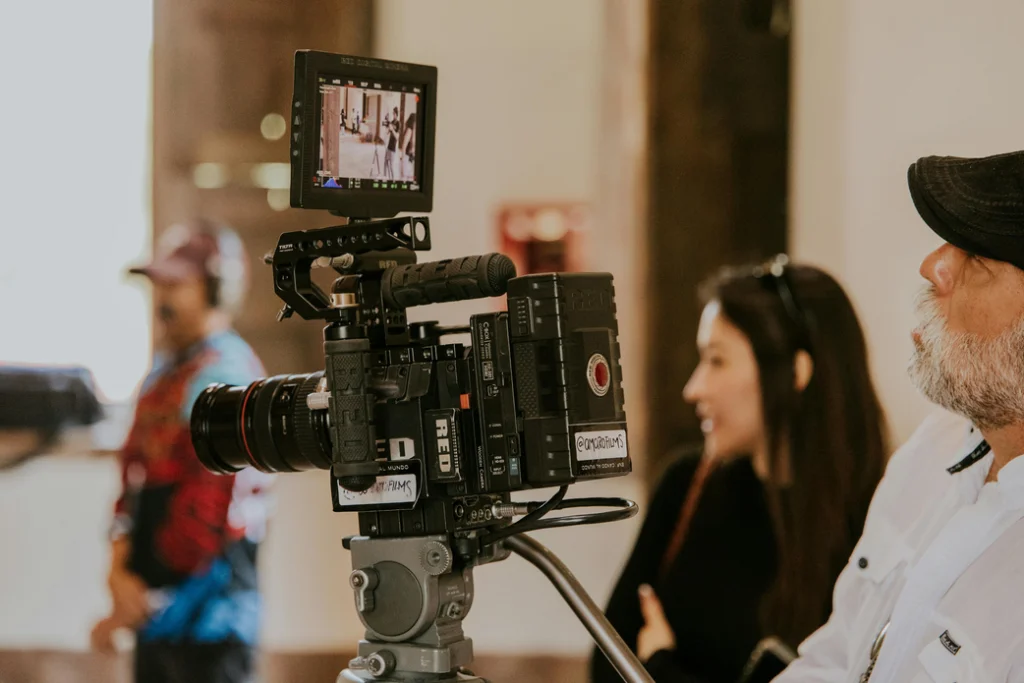
Television news documentaries in the 1980s—from “60 Minutes” investigations to network specials—created shared national moments when tens of millions simultaneously engaged with in-depth reporting on complex issues. These productions, often promoted for weeks in advance, became cultural events that families planned around, leading to concentrated public attention that could drive policy changes and shift national conversations. The substantial resources devoted to these projects—sending crews around the world, conducting dozens of interviews, spending months on research—reflected an investment in public understanding that increasingly struggled to find economic justification in later media models.
The technical limitations of 1980s production paradoxically enhanced their impact—the precious broadcast minutes couldn’t be wasted on visual gimmicks or emotional manipulation, forcing producers to focus on substance. When these documentaries tackled controversial topics like nuclear threats, AIDS, or environmental concerns, their broad reach ensured that diverse audiences encountered the same carefully vetted information, creating a common foundation for subsequent debates. The next-day conversations these broadcasts sparked—across breakfast tables, in classrooms, at workplaces—created information ripple effects that extended their impact beyond the original viewing, turning passive consumption into active civic engagement.
12. The Human Interest Story That Everyone Discussed

Before viral social media posts, human interest news stories—whether about the local hero, the child rescued from a well, or the community rallying around a family in need—spread through communities via multiple reinforcing channels. These narratives, first reported in local newspapers or television broadcasts, would be discussed at church gatherings, referenced in school announcements, and recounted at dinner tables, gaining emotional resonance through these personal retellings. Unlike today’s algorithm-driven virality, these stories earned their distribution through genuine human connection and community relevance, reflecting values and concerns that resonated across demographic lines.
The localized nature of these stories—often featuring people from the same geographic community as the audience—created different emotional dynamics than today’s often distant viral content. When readers or viewers recognized streets, buildings, or even people in the coverage, it fostered a sense of connection and investment that transcended mere entertainment. These stories frequently inspired direct action—whether donations, volunteered time, or simple acts of neighborliness—in ways that digitally mediated content often fails to achieve despite broader reach. The shared experience of discussing these stories face-to-face, with the natural empathy that physical presence encourages, created community bonds that purely digital information sharing rarely replicates.
13. The International News That Actually Felt Foreign
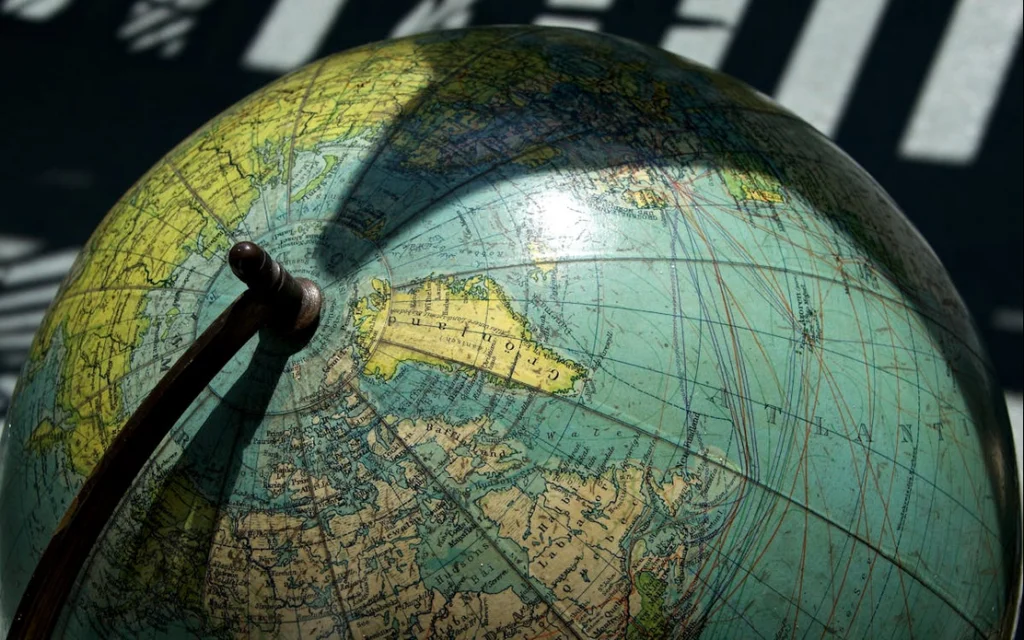
International news in the 1980s truly transported consumers to different worlds, with the relative scarcity of foreign reporting lending it a weight and exoticism largely lost in today’s globally connected media environment. When news programs featured international segments—often introduced with distinctive graphics and music cues that signaled “we’re leaving America now”—they offered genuine glimpses into worlds that remained mysterious to most viewers. The carefully selected foreign stories that made it through rigorous editorial filters had cleared a high bar of significance, making international news feel consequential rather than overwhelming.
Foreign correspondents achieved a special status in 1980s news ecosystems, their dispatches carrying the authority of someone who had physically traversed distances that most viewers would never travel. Their distinctive sign-offs—”John Smith, ABC News, Beijing”—reinforced the physical reality of their reporting in ways that today’s digital journalism sometimes struggles to convey. These international stories, consumed by large portions of the American public simultaneously, created shared reference points about the wider world that crossed political and demographic lines, making foreign affairs a common topic in everyday conversations rather than a specialized interest.
In reflecting on these more personal news experiences of the 1980s, we’re not simply indulging in nostalgia but recognizing fundamental differences in how information flowed through communities. The physicality of news—something you could hold, something delivered at specific times, something with defined boundaries—created natural limits that helped consumers process information without today’s perpetual overwhelm. The communal nature of consumption—families watching together, colleagues discussing the same headlines, communities rallying around local stories—fostered shared understanding across differences. While few would trade today’s instant access and diverse voices for the limited options of the past, we might still learn from an era when news consumption strengthened rather than strained our personal connections, and when being informed felt like joining a conversation rather than drowning in a flood.


